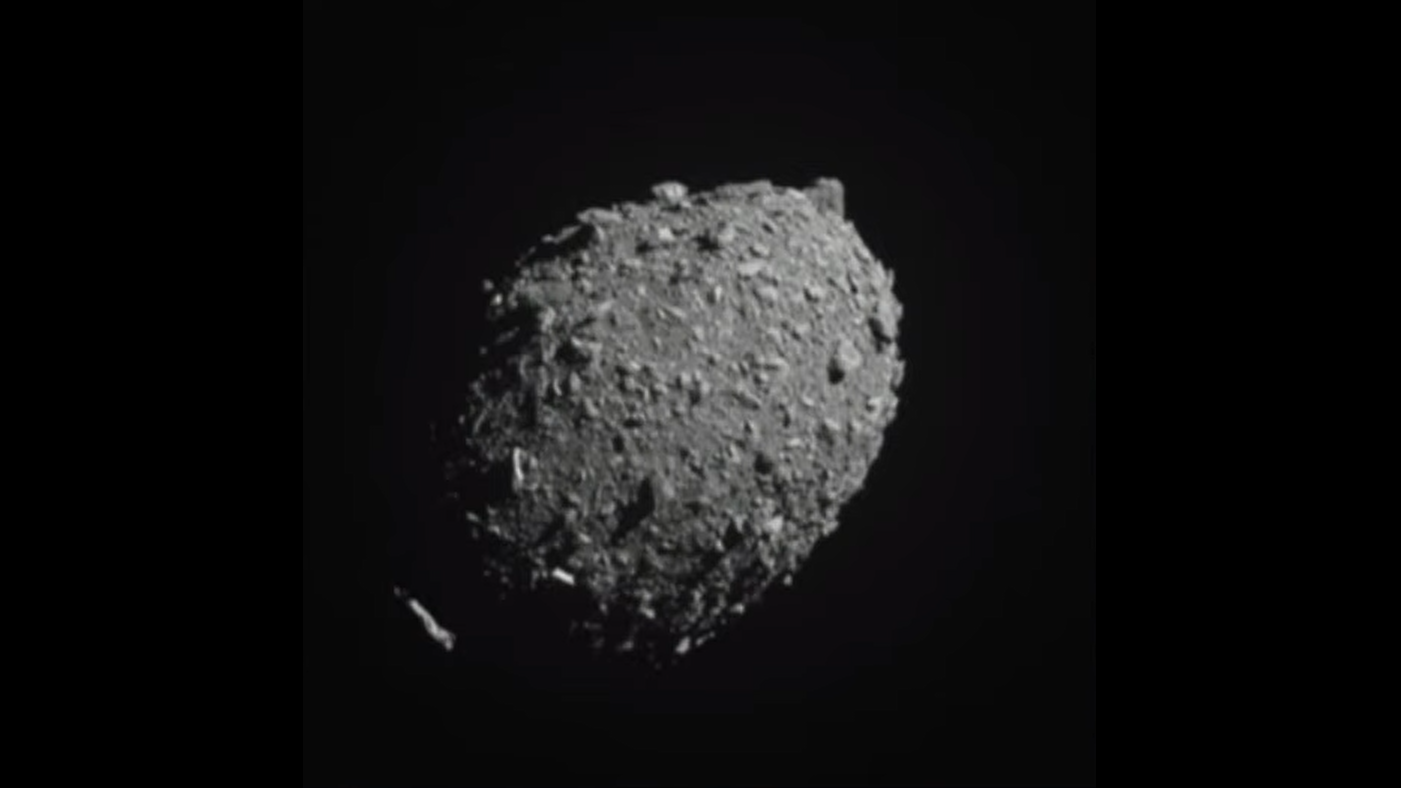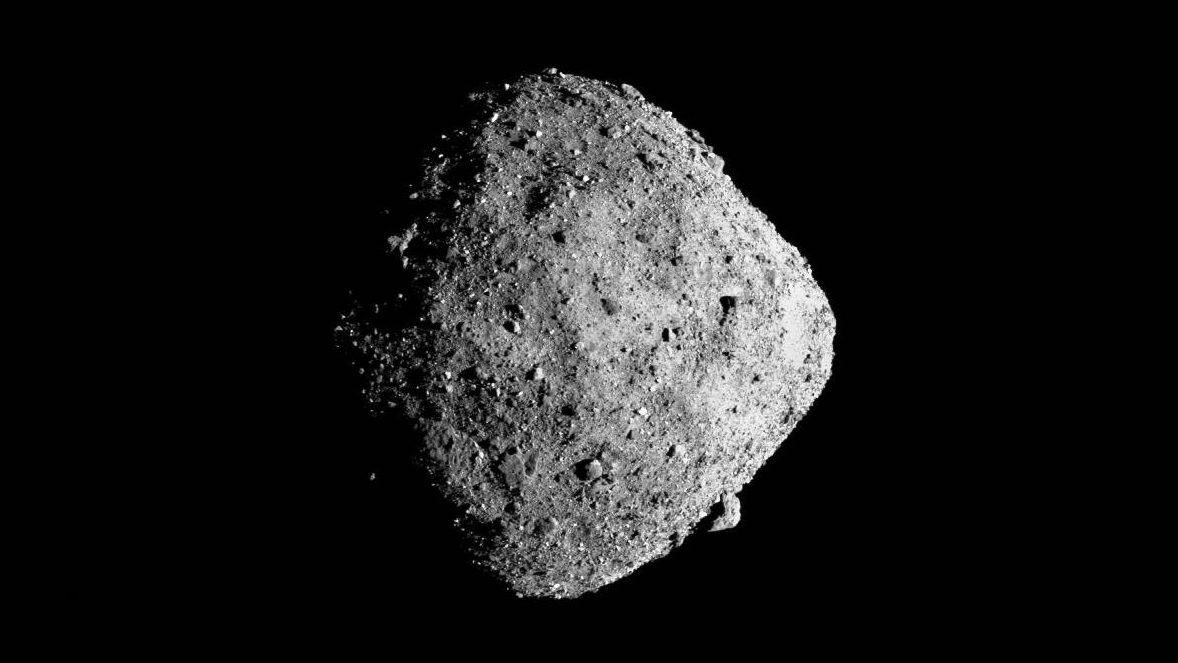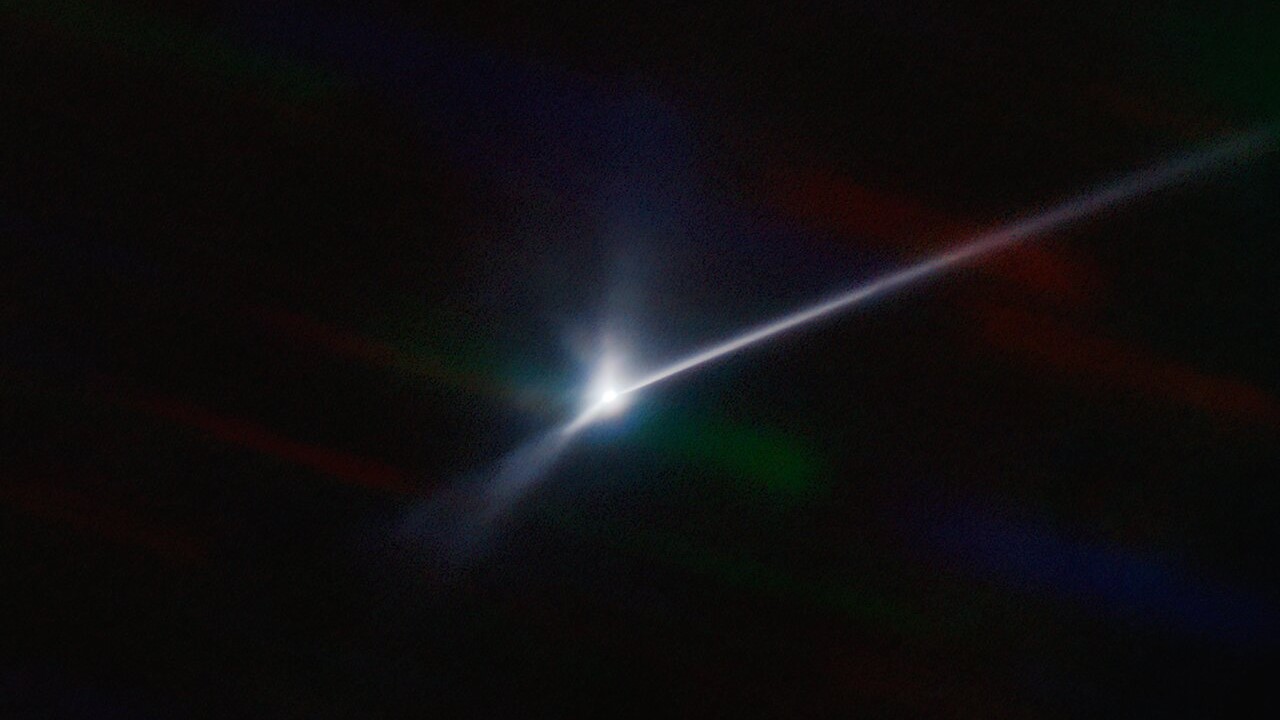NASA's DART asteroid crash: What scientists have learned about Dimorphos so far

Smashing a spacecraft into an asteroid isn't NASA's usual approach to planetary science, but it was certainly an opportunity nonetheless.
NASA's Double Asteroid Redirection Test (DART) spacecraft slammed into a small asteroid called Dimorphos on Sept. 26 to test a potential technique to protect Earth, should we find ourselves on a collision course with a large space rock. But the impact has also given planetary scientists a close, albeit fleeting, view of the smallest asteroid any spacecraft has visited to date.
"It's been a thrill to see the data come in," Carolyn Ernst, a planetary scientist at the Johns Hopkins University Applied Physics Laboratory and instrument scientist for DART's sole instrument, told Space.com. "Everybody's been eagerly poring over them and busy working on them."
Related: Asteroid impact: Here's the last thing NASA's DART spacecraft saw before it crashed
It's still early days for learning about the asteroid itself; scientists have had DART's data in hand for just a few weeks and will be running countless analyses before saying anything too confidently. "There's a lot of instant observations you can make, but there's a lot of careful things you have to put together before you go too far down any road," Ernst said.
The 525-foot-wide (160 meters) Dimorphos orbits a larger asteroid called Didymos, which is perhaps 2,560 feet (780 m) across. Before DART's November 2021 launch, scientists got a sense of both rocks' shapes thanks to planetary radar, bouncing a beam of radio waves off the asteroids.
As the DART spacecraft was sailing toward its final destination, that's about all scientists knew about the pair of rocks.
Breaking space news, the latest updates on rocket launches, skywatching events and more!
DART's sole instrument, Didymos Reconnaissance and Asteroid Camera for Optical Navigation (DRACO), was able to change that. For much of DART's journey, the asteroids appeared as one bright dot, but by about 10 minutes before impact, that dot began to transform into two small but unique worlds.
One characteristic of Dimorphos jumped out as soon as scientists saw DART's final few images before impact: its rocky surface strewn with boulders, dust and everything in between. Spacecraft have seen this kind of surface before: Japan's Hayabusa2 mission to Ryugu and NASA's OSIRIS-REx mission to Bennu both found themselves exploring agglomerations of rock, worlds that scientists call "rubble pile" asteroids.
"Because it looks so rubbly and because of what we know of those other asteroids, I think a lot of people imagine that it is sort of a rubble pile or kind of a loosely held-together collection of rocks," Ernst said.
That said, DART didn't reveal the innards of Dimorphos, so the rubble pile appearance may not hold up. "We don't have a direct way of measuring the interior," Ernst said. "Could the interior be a bunch of larger objects with smaller stuff on top of it? Could it be what it looks like on the surface all the way down? We don't directly have any insight into that."
A second characteristic of Dimorphos that struck Ernst during DART's approach was its egg-like shape, at least as seen from DART's approach angle. "It was less irregular than I expected," she said. "People often call asteroids big potatoes because they have plenty irregular shapes. So in that sense, I think it was more regularly shaped than I had expected."
As analysis continues, Ernst added, scientists will be looking for clues about whether the material on Dimorphos' surface appears to move, which could make the asteroid relatively round.
Scientists can also look forward to insight from the European Space Agency's Hera mission, due to launch in 2024 on a SpaceX Falcon 9 rocket and arrive at Dimorphos two years later. Hera will explore the asteroid and the impact's aftermath in three dimensions and without DART's haste.
A glimpse at Didymos
DART's view of Dimorphos' larger companion, Didymos, was even more cursory, since near the end of approach it slipped out of the spacecraft's field of view. But planetary scientists are studying Didymos with the data DART did send home.
"We have some interesting, intriguing looks at Didymos that we will absolutely be able to do some science with," Ernst said.
Even the passing view showed that Didymos and Dimorphos are two distinct bodies, despite their proximity. "The surface definitely looks different than Dimorphos," Ernst said. "You can definitely see some big boulders, on the limb especially. But it does not look like a giant pile of rocks, like Dimorphos does."
In particular, she noted that Didymos seems to show more variation in terrain between smooth and rough patches compared to Dimorphos' seemingly uniformly rocky surface.
The differences between Didymos and Dimorphos could influence how scientists try to explain the formation of binary asteroids. One idea suggests that the main body can spin so fast that material flies off it, eventually coalescing into a moon; a second idea posits that if the asteroid strays too close to a large planet, the planet's gravity can tear away material that becomes the moonlet.
Scientists believe about 15% of near-Earth asteroids are actually binary systems, with the occasional three-piece asteroid thrown in.
Meaning in the mess
Thanks to the DART mission's design, the spacecraft's abrupt demise didn't mark the end of data scientists can use to understand Dimorphos.
Firstly, DART carried with it a small companion called the Light Italian Cubesat for Imaging of Asteroids (LICIACube) that it deployed a couple weeks before the impact. LICIACube was equipped with two cameras and flew past the impact site about three minutes after DART arrived in hopes of spotting a crater or perhaps some debris.
"We didn't know what they would show when they set out to do it," Ernst said. But the LICIACube images showed rubble flying off Dimorphos in streamers. "Those images, they were quite striking and amazing."
Such large quantities of debris suggest that Dimorphos consists of material held together relatively weakly; consider throwing a tennis ball into a sandbox compared to bouncing it off a sidewalk. But there's a downside to the messiness of the impact as well. The LICIACube images are so full of debris that scientists can't decipher much about the asteroid's natural surface from the images.
But LICIACube wasn't DART's only witness. In addition, the mission recruited telescopes on the ground and in space to watch the aftermath of DART's collision.
The mission's planetary defense goal drove the primary duty of these observers. Should humans discover an asteroid that threatens to collide with Earth, planetary defense experts say, shortening the asteroid's orbit around the sun could ensure that the two bodies no longer risk trying to be in the same place at the same time.
To that end, the telescopes focused on the goal of clocking how long it now takes Dimorphos to circle Didymos. Dimorphos' orbit previously lasted 11 hours and 55 minutes; in the wake of the impact, that period has decreased by 32 minutes. That was on the high end of scientists' expectations before launch. And because rubble flying off Dimorphos would have contributed to the orbital change, the large decrease underscores how much debris DART created.
But the continuing observations also tell scientists plenty about the asteroids as space rocks, as well as about what happens when asteroids collide naturally.
Usually, the Didymos system is a single bright dot to telescopes on the ground. But just two days after impact, the asteroid pair sported a long, bright comet-like tail that stretched 6,000 miles (10,000 kilometers) into space.
Like LICIACube's images, observations of the tail suggest that DART left quite a mess. As radiation pressure from the sun pushed debris into the tail; that debris also reflected sunlight, hence the bright smudge.
"It basically looks like a little comet, a temporary comet," Ernst said.
Scientists have been able to watch the tail change over the weeks following DART's impact. The Hubble Space Telescope has been particularly important on that front, observing the asteroid 18 times since the collision and catching Dimorphos sprout a second tail, which comets occasionally do as well.
Dimorphos isn't the first asteroid to dress up as a comet; about one in every 10,000 space rocks is an "active asteroid" with comet-like traits like a tail. Intriguingly, scientists already thought that these confusing sights might occur when a natural impact throws rubble off the asteroid's surface.
But there's a lot more work to do before scientists are willing to draw any grand conclusions about asteroids from their glimpses at Didymos and Dimorphos. "I think it's honestly going to take quite a bit of time for people to kind of reconstruct everything about what that means," Ernst said of the tail.
Email Meghan Bartels at mbartels@space.com or follow her on Twitter @meghanbartels. Follow us on Twitter @Spacedotcom and on Facebook.

Meghan is a senior writer at Space.com and has more than five years' experience as a science journalist based in New York City. She joined Space.com in July 2018, with previous writing published in outlets including Newsweek and Audubon. Meghan earned an MA in science journalism from New York University and a BA in classics from Georgetown University, and in her free time she enjoys reading and visiting museums. Follow her on Twitter at @meghanbartels.


